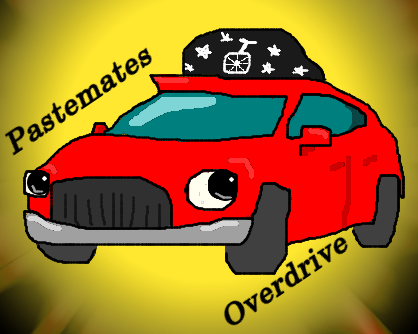At a Glance
Expert’s Rating
Cons
Pastemates Overdrive Mac Os Catalina
Our Verdict
For the past decade, Alessandro Levi Montalcini’s USB Overdrive has let Mac users control and customize their USB mice, keyboards, and gaming devices (and, more recently, Bluetooth mice). USB Overdrive generally provides more and finer-grained options than the software included with such peripherals, and it often allows Mac users to take advantage of hardware that has no official Mac support.

USB Overdrive 1.4 (Mac abandonware from 2003) To date, Macintosh Repository served 1444277 old Mac files, totaling more than 287186.5GB! USB Overdrive 4.0.1 is available for macOS 10 Catalina. The previous release of the USB Overdrive works great in macOS 10.15 Catalina and still supports macOS 10.14 Mojave, macOS 10.13 High Sierra, macOS 10.12 Sierra and 10.11 El Capitan. USB Overdrive 4.0.1 Crack Mac is a macOS system driver that handles any USB or Bluetooth mouse, keyboard, trackball, joystick, gamepad or gaming system from any producer and allows you to configure it both globally or for particular purposes. The USB Overdrive Keygen reads every kind of wheels, buttons, keys, switches, and controls and assigns them to helpful actions like clicking, typing. Getting started with a Mac. With a Mac, you can borrow and enjoy ebooks, audiobooks, and streaming videos from your library's digital collection. Note: If you belong to a school, you may be able to use Sora in your web browser instead. Open your library's digital collection on your computer (find it on overdrive.com). How to Sync Mac Desktop, Document with OneDrive OR OneDrive Business. Like most of you reading this article, you are probably using OneDrive as your cloud document storage but can’t force the desktop, document or other folders on your MAC to sync with it. This short tutorial will show you how to do that.
The latest version, USB Overdrive 3, functions as a 32- or 64-bit System Preferences pane and works in Tiger, Leopard, and Snow Leopard. With the software, you can do things such as configure mouse button functionality for specific applications (the right button can act as a double-click in the Finder but as a Save button in BBEdit, for example); turn a wired or wireless Mighty Mouse into a left-handed device; or use the special media keys on many third-party keyboards without installing that device’s software.
For my tests, I removed Logitech’s mouse and keyboard software and installed USB Overdrive. I then programmed it for use with my Logitech diNovo keyboard Mac edition () and MX1100 mouse ().
I had few problems with the diNovo keyboard, however. As with many keyboards, the diNovo Edge has special keys for functions such as display brightness, Expose, Dashboard, iTunes playback, volume, and application launching. With Logitech’s drivers installed, those keys functioned properly. But with USB Overdrive, some keys worked and others didn’t. The developer explains that USB Overdrive generally takes over sections of keyboards (interfaces) that it can see, rather than individual keys, and that many vendors use non-standard or hidden code for their buttons. He has chosen not to try and support individual devices that don’t conform to regular human interface device (HID) guidelines. USB Overdrive does, however, include some workarounds for specific devices.
How do you know if a key is supported? When the USB Overdrive preference pane is open, clicking on a button adds it to the list of buttons that you can control. If you click on a button and nothing happens, then USB Overdrive can’t handle it. In the case of my keyboard, the keyboard’s special commands overlay the F1 to F19 keys, so I could still activate the keyboard’s built-in brightness controls, for example, by pressing the fn key along with F1 or F2 (as defined in OS X’s Keyboard preference pane).
USB Overdrive’s interface can also be a little tricky to figure out. The four options under the Settings tab are Any Mouse, Any Application; Any Gaming, Any Application; Any Keyboard, Any Application; and Any Other, Any Application. As you might guess, those controls are global. To create device- or application-specific controls, you need to choose the New Duplicate Settings command to copy those settings to a new set and then assign that set to a particular device or application. Once you do so, you have complete control over your devices. Interestingly, keyboard configurations don’t show up under the Keyboard option, but rather under Mouse and Other.
Existing USB Overdrive users (the previous version was called 10.4.8) should take note that version 3 can’t read preferences from older versions. So if you have lots of application- or device-specific settings, you’ll need to recreate them in the new version. But USB Overdrive 3 can now import and export its settings, so at least you’ll be able to move them from one Mac to another.
Pastemates Overdrive Mac Os Downloads
Despite its limitations, however, USB Overdrive offers Mac users with sophisticated button control that can reduce clicks and speed up productivity. And in my time using it, I’ve found it to be much more stable than any version of Logitech’s own software, which has caused problems for me for years.